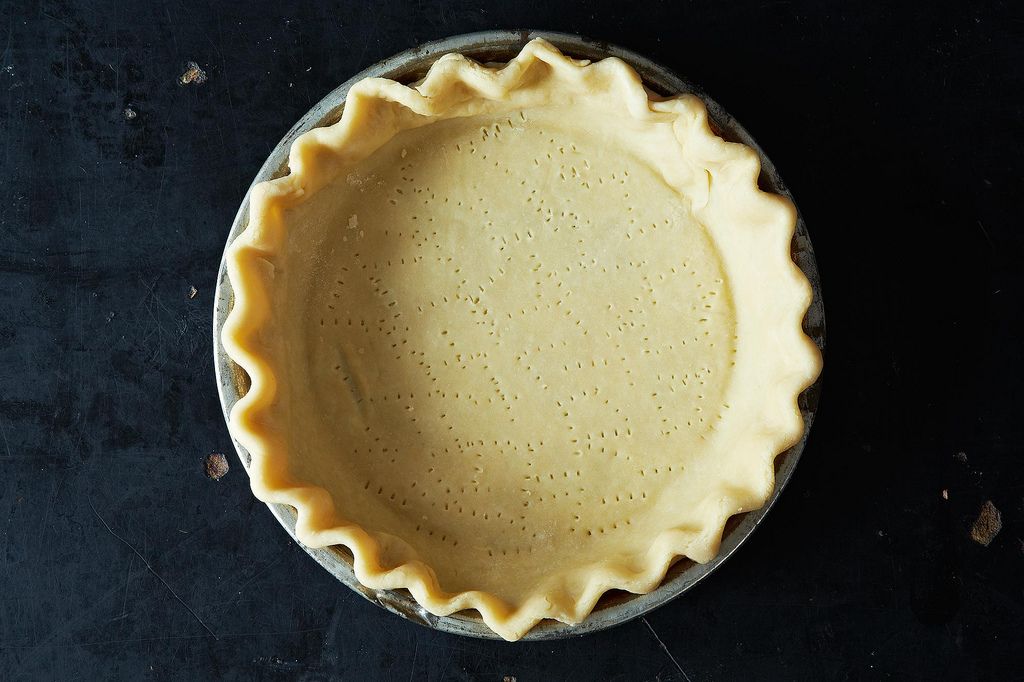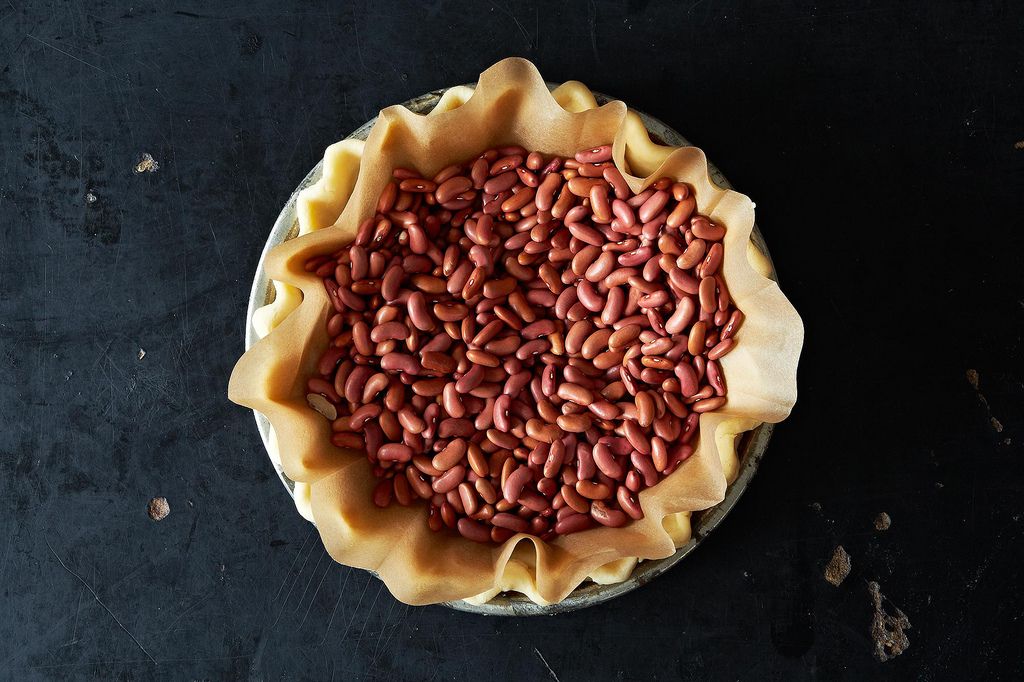Inspired by conversations on the Food52 Hotline, we're sharing tips and tricks that make navigating all of our kitchens easier and more fun.
Today: All the ways to blind bake a pie crust.

Pie baking can get scary when you're reading a recipe and the directions sound like something you'd find at an old-timey gymnasium. What is docking? Do I have to locate an actual dock? What are pie weights? How heavy are these pie weights, and can I lift them if my current exercise of choice is running to the subway?
And so on.
But these exercises -- these techniques -- exist to keep your pie crust from puffing up before you fill it. (Much like treadmills exist to keep other things from puffing up.) If you're going to prebake, or "blind bake" a pie crust -- like you normally do for a custard-filled pie or a cream pie -- here's what you need to know:
Docking
Docking entails poking your unbaked crust with a fork before baking it. This allows steam to escape evenly and easily, and prevents uneven baking or a bubbly, puffy crust. To dock your pie crust, simply roll or press it into your pie plate as you normally would, and then go at it with a fork. You want roughly this many pokes:

Next, you'll need to weigh down your crust to ensure it maintains its shape during baking. Make sure to line your crust with foil or parchment paper, to protect your crust. If you're using foil, press it in to fit the shape of your crust. Next, you'll need something that conducts heat -- so that the heat from your oven actually reaches the top of the crust. Here are your options:
Ceramic Pie Weights
These are round little doo-dads that weigh your pie crust down while you bake it. You can find them online, or at cooking supply stores. But if you don't feel like one more kitchen purchase, you can use:
Beans, Rice, or Pennies
According to this hotline thread, our community agrees that dried beans work just as well as pie weights. Any type will do, so long as you don't try to cook them later. Pennies also conduct heat quite well -- if you'd like to use them, wash them in soapy water and line your pie crust with parchment before weighing it down.

Uncooked rice also makes an effective alternative to pie weights. According to The Kitchn, Rose Levy Beranbaum lines her pie crust with parchment, butters the parchment, and fills it with rice; she then uses the toasted, buttered rice to make pilaf. Now that's resourceful.
One last thing about your pie plate:
As you learned in middle school science (maybe), glass and metal conduct heat differently. Metal pie plates will heat up faster, but they don't conduct heat as evenly as glass pie plates. Also, as the ladies from Four and Twenty Blackbirds explain in their new book, glass pie plates allow you to check in on the color of your crust. So keep these factors in mind when choosing a pie plate or deciding on cooking time -- and make sure to listen when a recipe tells you to use a specific type of pan.
Once you've prebaked your crust, you can fill it with a custard, a cream filling, or even a quiche -- just be sure to invite a few friends over, and eat your leftovers for breakfast the next day.

Photos by James Ransom






See what other Food52 readers are saying.